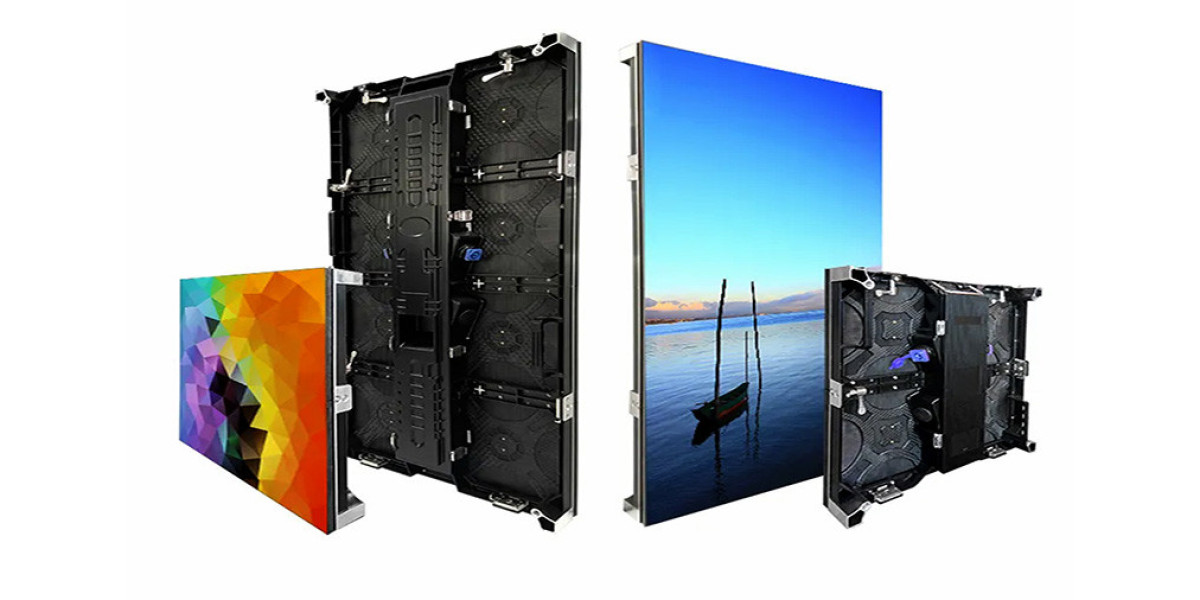What are SMD Screens?
So, what exactly are SMD screens? SMD stands for Surface-Mount Device. This refers to a type of LED screen where the individual diodes are mounted directly onto the surface of the printed circuit board. This is a significant departure from older technologies where components were mounted through holes in the board. SMD screens are renowned for their compact design, superior performance, and versatility.
The Technology Behind SMD Screens
SMD technology is all about miniaturization and efficiency. In an SMD screen, each pixel is made up of tiny LEDs that are incredibly small but mighty. These LEDs are soldered directly onto the circuit board, creating a seamless and compact array of light sources. This method not only saves space but also enhances the screen's durability and performance.
Advantages of SMD Screens
Superior Picture Quality
One of the standout features of SMD screens is their picture quality. The density of the LEDs and the precision with which they are arranged allow for incredibly sharp and vibrant images. Whether you're watching a movie, playing a video game, or displaying an advertisement, the clarity and color accuracy are second to none.
Energy Efficiency
In today's world, energy efficiency is more important than ever. SMD screens are designed to consume less power while still delivering outstanding performance. This makes them not only environmentally friendly but also cost-effective in the long run.
Durability and Reliability
SMD screens are built to last. The robust construction of these screens ensures that they can withstand a variety of environmental conditions without compromising performance. Whether it's extreme temperatures, humidity, or physical impacts, SMD screens are up to the task.
Versatility in Application
From commercial billboards to home theater systems, SMD screens can be used in a wide range of applications. Their flexibility and adaptability make them a popular choice in various industries, including advertising, entertainment, and even medical fields.
Applications of SMD Screens
Commercial Use
SMD screens are a staple in the commercial sector. They are widely used for digital signage, billboards, and video walls, providing eye-catching displays that attract and engage customers.
Industrial Use
In the industrial sector, SMD screens are used for monitoring and control systems. Their reliability and clarity make them ideal for displaying critical information in factories and control rooms.
Consumer Electronics
SMD technology is also making waves in consumer electronics. From ultra-thin televisions to high-resolution computer monitors and smartphones, SMD screens are becoming the standard for high-quality displays.
Outdoor and Indoor Advertising
The advertising industry has embraced SMD screens for both indoor and outdoor use. Their brightness and durability make them perfect for outdoor billboards, while their clarity and color accuracy make indoor advertisements pop.
SMD Screens vs. Traditional Screens
Comparison with LCD Screens
LCD screens have been around for a long time, but SMD screens offer several advantages. SMD screens provide better contrast, faster response times, and wider viewing angles compared to traditional LCDs.
Comparison with LED Screens
While both SMD and traditional LED screens use light-emitting diodes, SMD screens are more compact and offer higher pixel density. This results in better image quality and more vibrant colors.
Comparison with OLED Screens
OLED screens are known for their deep blacks and vibrant colors, but they can be more expensive and less durable than SMD screens. SMD screens offer a great balance between cost, performance, and durability.
How to Choose the Right SMD Screen
Factors to Consider
When choosing an SMD screen, several factors come into play. Understanding these can help you make an informed decision.
Size and Resolution
Consider the size of the screen and the resolution you need. Higher resolution screens offer better image quality but may come at a higher cost.
Brightness and Contrast Ratio
Brightness and contrast ratio are crucial for ensuring the screen is visible in various lighting conditions. Higher brightness and contrast ratios provide clearer and more vibrant images.
Viewing Angle and Response Time
A wide viewing angle ensures the screen is visible from different positions, while a fast response time reduces motion blur and improves overall image quality.
Installation and Maintenance of SMD Screens
Installation Tips
Proper installation is key to getting the most out of your SMD screen. Ensure that the screen is mounted securely and that all connections are properly made. Professional installation is often recommended for large or complex setups.
Maintenance Practices
To keep your SMD screen in top condition, regular maintenance is essential. Clean the screen regularly to prevent dust buildup, and check for any loose connections or signs of wear and tear. Regular software updates can also help maintain performance and fix any bugs.
Future Trends in SMD Screen Technology
Innovations and Upcoming Advancements
The future of SMD screen technology looks bright, with continuous innovations aimed at improving performance and expanding applications. Advances in materials and manufacturing processes are expected to lead to even thinner, lighter, and more efficient screens.
Potential Impact on Various Industries
As SMD technology evolves, its impact on various industries will only grow. From enhancing the consumer experience to improving operational efficiencies in industrial settings, SMD screens are set to play a pivotal role in the future of display technology.
Case Studies: Successful Implementations of SMD Screens
Real-World Examples
Several businesses and organizations have successfully implemented SMD screens, reaping significant benefits. For example, a leading retail chain used SMD screens for in-store advertising, resulting in a 20% increase in sales. Similarly, a transportation company used SMD screens for real-time passenger information, improving customer satisfaction and operational efficiency.
Benefits Realized
The benefits of SMD screens are clear: improved visual appeal, increased engagement, and enhanced functionality. Whether in advertising, retail, or transportation, SMD screens have proven to be a valuable investment.
Challenges and Limitations of SMD Screens
Potential Drawbacks
Despite their many advantages, SMD screens are not without their challenges. Potential drawbacks include higher initial costs compared to some traditional screens and the need for specialized installation and maintenance.
Common Issues and How to Address Them
Common issues with SMD screens include pixel failure and color inconsistency. Regular maintenance and professional servicing can help mitigate these problems, ensuring long-term performance and reliability.
Cost Considerations
Initial Investment vs. Long-Term Benefits
While the initial investment in SMD screens can be higher, the long-term benefits often outweigh the costs. Energy efficiency, durability, and superior performance contribute to cost savings over time.
Cost Comparison with Other Screen Technologies
When comparing costs with other screen technologies, it's important to consider not just the purchase price but also the operational and maintenance costs. SMD screens often offer a better return on investment due to their longevity and efficiency.
Environmental Impact of SMD Screens
Eco-Friendly Aspects
SMD screens are designed with environmental sustainability in mind. They consume less power and have a longer lifespan, reducing electronic waste. Additionally, many SMD screens are made with recyclable materials.
Lifecycle and Recyclability
The lifecycle of an SMD screen is longer than many traditional screens, and when they do reach the end of their useful life, they can often be recycled, further reducing their environmental impact.
Expert Opinions on SMD Screens
Insights from Industry Leaders
Industry experts agree that SMD screens represent the future of display technology. Their superior performance, energy efficiency, and versatility make them an attractive option for a wide range of applications.
Predictions for the Future
Looking ahead, experts predict that SMD screens will continue to evolve, with new advancements improving their performance and expanding their use cases. From flexible displays to higher resolutions, the future of SMD technology is full of exciting possibilities.
Conclusion
In conclusion, SMD screens are a game-changer in the world of display technology. Their superior picture quality, energy efficiency, durability, and versatility make them a standout choice for various applications. Whether you're looking to enhance your home entertainment system, boost your business's advertising efforts, or improve industrial monitoring, SMD screens offer a reliable and high-performance solution. As technology continues to advance, the potential of SMD screens will only grow, making them an investment worth considering.
FAQs
What are SMD screens used for?
SMD screens are used in a variety of applications, including commercial advertising, industrial monitoring, consumer electronics, and more. Their versatility and superior performance make them suitable for both indoor and outdoor use.
How do SMD screens work?
SMD screens work by mounting tiny LEDs directly onto the surface of a printed circuit board. These LEDs combine to create high-resolution images with vibrant colors and sharp detail.
Are SMD screens better than traditional LED screens?
Yes, SMD screens generally offer better picture quality, higher pixel density, and greater energy efficiency compared to traditional LED screens. They are also more compact and versatile.
How long do SMD screens last?
The lifespan of an SMD screen can vary depending on the quality of the components and usage conditions. However, they are generally known for their durability and can last for many years with proper maintenance.
Can SMD screens be used outdoors?
Yes, SMD screens are designed to withstand various environmental conditions, making them suitable for outdoor use. Their brightness and durability make them ideal for outdoor advertising and signage.








